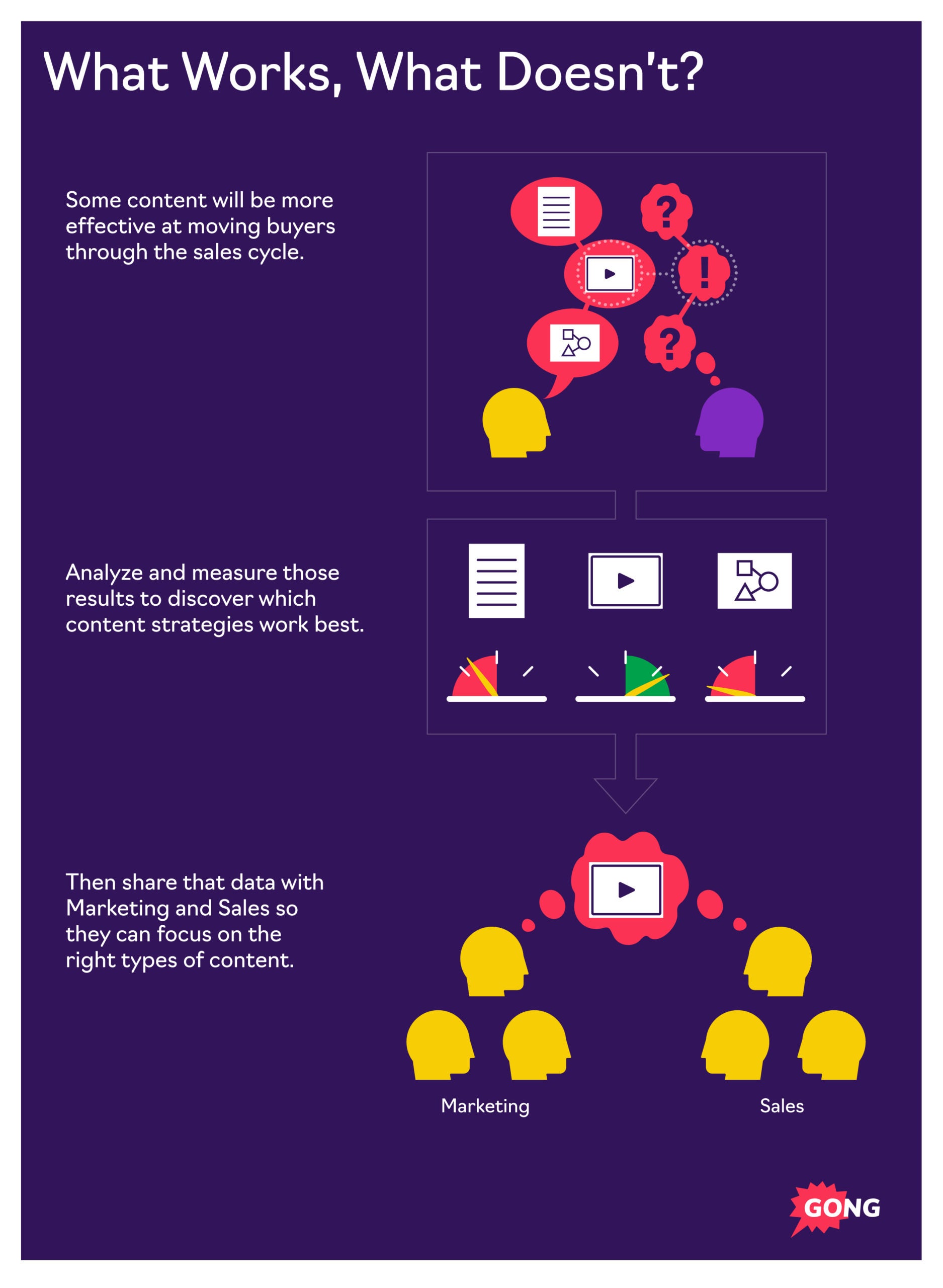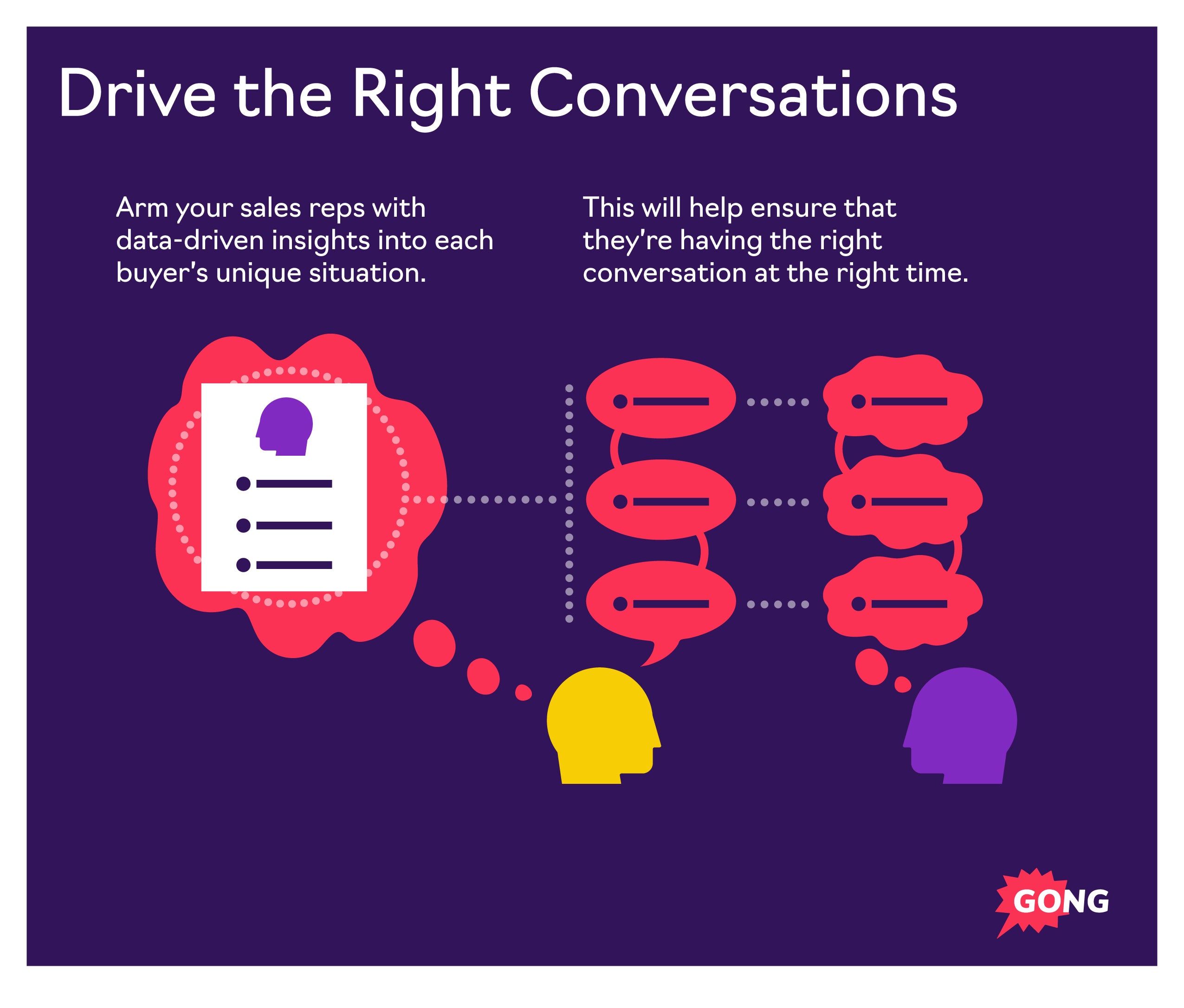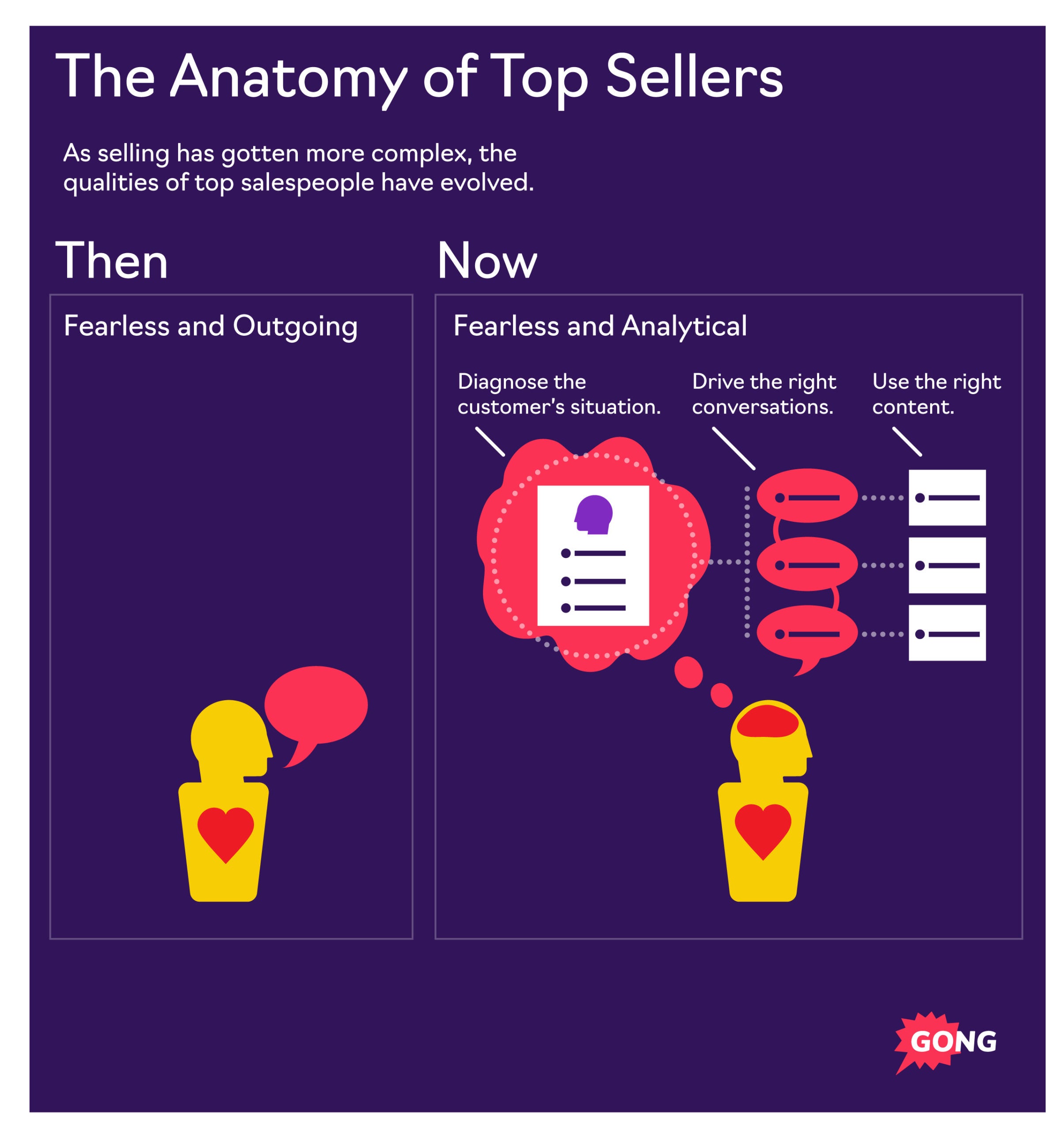How has the buyer’s journey evolved?
What can modern revenue teams do to adapt and win in an ever-changing selling environment?
Why is data more important than ever?
On a recent episode of the Reveal podcast, we connected with Ed Calnan for answers to these and other questions that are top of mind for revenue leaders.
Ed is co-founder and CRO of Seismic. Since its launch in 2010, the company has grown from its five original founders to over 550 employees and nine offices around the world.
Here are the key takeaways and highlights from that episode.
The Evolution of Sales Enablement
It’s this concept that’s been around since the beginning of business. Marketing creates a bunch of stuff. Salespeople don’t know where it is, and don’t know how to use it effectively.
And so we kind of bridge that gap…we analyze everything underneath. You turn on our infrastructure and you can listen to the behavior of the marketing team. Listen to the behavior of the sales team. And much like the Gong platform, analyze all of it and then give feedback.
Nine years ago when we started the company, sales enablement really wasn’t a category. And I’d love to say that we had this grand plan of being this category leader. We didn’t. We knew we wanted to fix that fundamental problem of connecting Marketing and Sales. And over time, if you look at LinkedIn, the number of sales enablement titles in the last 24 months has climbed from 3,500 to 75,000 professionals.
People are really waking up at the C-suite to understand that if you can enable your sales professionals more effectively, good things are going to happen.
The Role of Data in Sales
For the marketing side of the business, it really starts with insight to the conversations that the reps are having in the field. Like the Gong platform delivers excellent insight to the conversations on the phone.
But once you get into the physical world, and enterprise reps go out to visit CMOs to talk about fixing business problems, all that information is lost. And what we do is, we help the marketing team get insight to what the sellers are using, at what stage of the sales cycle, whether or not that content’s actually moving the needle in the pipeline. And then help them plan their year heading into next year.
So a great example is a lot of people used to create white papers—these long-form pieces of content. And we can analyze every time a seller uses it in a sales pursuit, but also more importantly every time it’s sent to a prospect.
So we found in the last year of analyzing all that data, is people don’t like to read long documents anymore. They like to look at snippets of video on their phones. So as you’re planning your budget for next year, why print more white papers when you should build more videos. You can then use that data to show the CEO why you need to increase the budget 50% next year on the video side.
For salespeople, it also helps them get a sense for what’s working with their peers. Because we’re all pretty competitive people. Type-A personalities. So everybody knows who’s doing really well. And it’s great insight for sellers to be able to go in, and if you’re the top salesperson in the company, to go in there and say, “Alright, what’s she doing at what stage of the cycle? Why is her game so much better than mine?” And then analyze all of that, and make everything better as we go. So the next time Seismic suggests you use a piece of content, it has data behind it that shows that this video case study or this PowerPoint presentation is successful most of the time.

When we started, it was really all about arming sales reps to have the right conversation at the right time. And that’s precisely what we do using data. So if you’re walking into an organization, we know from CRM what the opportunity is, whether they’re a prospect or a client, what products they buy, what the buyer persona is, what industry it’s in, what country in the world it’s in.
And we take all of that information, and we say, “Okay, based upon all this stuff that we know, here’s the right conversation to have.” It’s fascinating, because it saves sales reps an average of 30 hours a week looking for the right things to use in their presentations.
Relevant conversations are what it’s all about.

The Characteristics of Great Sellers
When I started my career a long time ago, you’d hear the characteristics for a seller are, “Who’s the most gregarious? Who’s the most outgoing? Who’s the type-A personality? Who’s fearless and tough?”
And I think it’s all changed because 20 years later, it’s more about who’s analytical, who can diagnose the customer’s situation, who can use the right content, who can use the right data to drive the right conversations.
You still have to be tough. You still have to work hard. You still have to be competitive. You also have to be smart. And you’ve got to think through every single interaction.
You know, selling today, the buyers have become more complex. 70% of the buyer’s journey is done before the sales rep shows up. So they know who you are. They know what customers like you, what customers hate you, what your price points are. And if you don’t use that to your advantage, you’re going to lose a lot more than you win.
So we like to get people who are thoughtful, who are analytical, who are smart, who think critically, and then use the tools at their disposal to have better conversations and win more.

Data Breakout—Adapting to the New Buyer’s Journey
Ed is most likely citing the popular stat from Sirius Decisions, noting 67% of the buyer’s journey is now done digitally.
This means if you’re relying on a single source of information to run your business, which in the past was typically your sales team, your go-to-market approach needs some updating.
In the research phase, 72% of buyers start with Google. Which begs the question, What will they find? And is that the narrative you want told to start your relationship? Now, your digital presence is more important than ever.
And telling this narrative takes time to convert into a sales opportunity, with nurtured leads contributing 20% more to sales pipeline than non-nurtured leads. How are you managing your “not now” conversations?
90% of buyers say they’ll find you when they’re ready—but that doesn’t mean you should wait! This is where your sales team really comes into play. They need to be armed with your messaging and equipped to deliver it in every selling scenario.
This is how modern revenue teams win. They accept the new complexities of our digital environment, and they execute at every turn.
Be Coachable
You can train anyone. You start at the company tomorrow, I give you your Mac, I give you your playbook, you go through a curriculum for 12 weeks. And we can see if you’re doing the work or not. So it’s easy to measure that.
The hard part is to take coaching in real time and to apply it to real life scenarios. We have a really good track record of hiring. Our BDR team is fresh grads, and we’ve always had a great success with hiring college athletes. It’s less so about the competitiveness and the toughness, and more so about the ability to take coaching. Because we all are sensitive, and we all have fragile egos.
One of the people on our team was a starting pitcher at Stamford. And so imagine, you’re out there on the mound all by yourself, and you give up a home run, and there’s nowhere to hide. And you go back to the dugout, and the coach has some advice for you, and you’re used to getting that feedback. I think that’s critical.
You don’t have to be an athlete to work in software sales, but you have to have that self-awareness and the ability to take coaching. And then the next inning, when you go back to that pitcher’s mound, to make sure that you apply it to the next batter, so they’re not going to hit one out of the park again. And that’s the key, is the ability to be self-aware and take the assessment, and also to put it into practice in real time.
Question Everything
That’s my favorite part of the job, is looking at the film and trying to figure out, “Okay, what didn’t go right?” And then applying it for the next quarter.
And then more importantly, when you’re having a successful quarter, to look at the film and say, “Okay, why are we winning? Is it because we’re really good and our product’s great, or is it because everybody else stinks and we were lucky this time?”
In the early days when we got our first million dollar contract, we drank a bunch of beers and we celebrated, and then we got up the next day and tried to find the next one.
Subscribe to Reveal: The Revenue Intelligence Podcast
Every week, we interview senior revenue professionals who share their insights on how they leverage revenue intelligence to drive success and win their market.
You’ll hear how modern go-to-market teams win, close revenue with critical deal insight, and execute their strategic initiatives—plus all the challenges that come along with it.
Listen now at gong.io/podcasts.